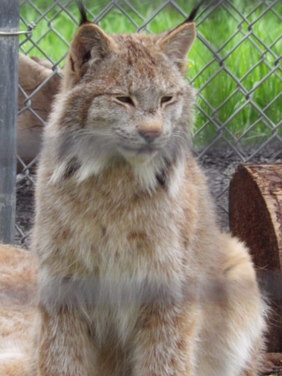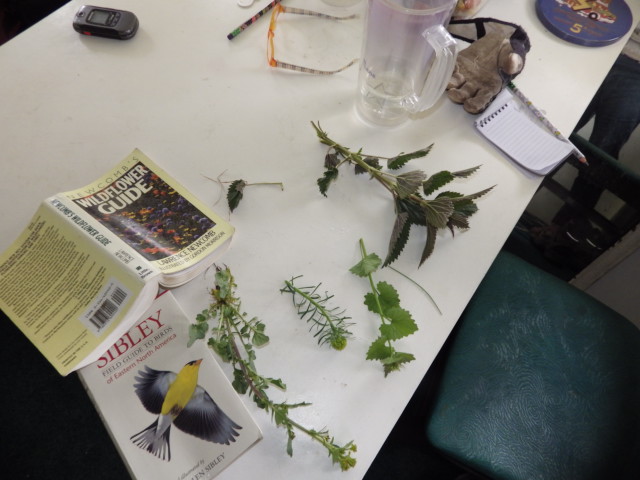|
We spend a good portion of our time, we humans, trying to identify and categorize all manner of creatures, including one another. (Is that a boy or a girl? What kind of accent/haircut/outfit is that? One of ours or one of theirs?)
And, even when we can't identify, we sort things as either "good" or "not-good." Any little kid can tell you that dolphins are nice and good, while sharks are mean and scary.
Anyhoo.
Judging is arguably how we survived for hundreds of thousands of years of evolution: correctly id-ing food vs. non-food, sorting bad guys from among the good folk of the world, drawing clever parallels between similar things.
"What's past is prologue"* even with as spendthrifty a pen (keyboard) as this one.
*This quote from of course, The Tempest. Act 2, with Antonio and Sebastian piffling away on shore. And with the prologue passed, the point of my piffle: While strolling through my tiny kingdom, I find myself not just trying to name the plants, but also sorting them by my lights as bad or good. I spent a studious half-hour or so on figuring out what these four plants were. Each with a maybe yellow flower, each growing rampant on the Would-Be Farm. Each a familiar mystery.
Right to left: the nettle is easy, but as it turns out, it's not common nettle, but Tall Nettle. The second is Garlic Mustard, then Cypress Spurge. And finally, with the dandelion-y leaves, Marsh Yellowcress.
Tall Nettle (Urtica procerea) is a stinger: tiny hairs on the stem will give you a dose of formic acid and histamine that feels a bit like the bite of a fire-ant. Dried, it's used to treat scalp problems, while traditional herbalists would suggest applying the stings to arthritic joints –– sometimes the cure is worse, wait, no, it does in fact work. Nettle also nutritious: steamed or cooked as spinach, nettle is full of Vitamin A and calcium. So while I want to say it's a bad plant, it's got its good points too. Garlic Mustard (Alliaria petiolata) is a garlic-scented member of the mustard family. Shocker, I know, with a name like that. Pretty solidly a baddie, although it's edible from top to toe. I will be grazing on this plant next spring, knock wood. Cypress Spurge (Euphorbia cyparissias) is a recent (1860-ish) immigrant to the country. It's an ornamental that spreads rapidly. Its seed-pods detonate and can broadcast seeds up to five feet. Whoa. It's poisonous to horses and cows (but not sheep. Go figure.) While the milky sap is poisonous to humans, it has been used to remove warts. That's something. Cypress Spurge has some other traditional medicine uses, but I'm going to keep my gloves on and pull it as a weed. Marsh Yellowcress (Rorippa palustris) is a mustard and a cress, which is all to the good. It's native, it likes the boggy wetlands that stripe the farm, and it is edible raw (ooh! peppery!) or cooked (add a little olive oil and balsamic vinegar. nom nom nom). Is it ironic that I am basically re-discovering the common knowledge of my hunter-gatherer ancestors?
7 Comments
George A.
6/13/2017 10:12:34 am
You want to pick your nettles while they're still quite small (early spring, when they're just about the only green growy out there) to make that soup. Elisabeth's grandma, back in the old country, raved about it's benefits. Off hand I think she was just raving.
Reply
Amy
6/13/2017 11:32:28 am
Thanks, George -- will do. I'll post results, knock wood, next spring!
Reply
failed forager
6/14/2017 09:19:32 am
Each year the man at Agway has to remind me to put some lime down before that fertilizer. The more someone learns, the more they come to realize they don't know, and I don't want to get caught in That trap. (great lynx pic !)
Reply
Amy
6/15/2017 06:18:21 pm
Hey Failed
Reply
forage
6/16/2017 09:22:06 am
Granite farm families from northern NY through NE need and deserve such a fabulous resource as Cornell ag sciences. Agway man always tells me lime first in my acidic soil makes the fertilizer much more effective at its job. I'm no Joel Salatin.
George A
6/16/2017 11:56:45 am
The acid rain we get now days makes lime pretty much a given.
Reply
Amy
6/23/2017 10:03:26 pm
With the reduction of coal-burning electrical plants, the acid rain became much less of a hazard in the Adirondacks in recent years.
Reply
Leave a Reply. |
About the Blog
A lot of ground gets covered on this blog -- from sailboat racing to book suggestions to plain old piffle. FollowTrying to keep track? Follow me on Facebook or Twitter or if you use an aggregator, click the RSS option below.
Old school? Sign up for the newsletter and I'll shoot you a short e-mail when there's something new.
Archives
June 2024
Categories
All
|


 RSS Feed
RSS Feed
